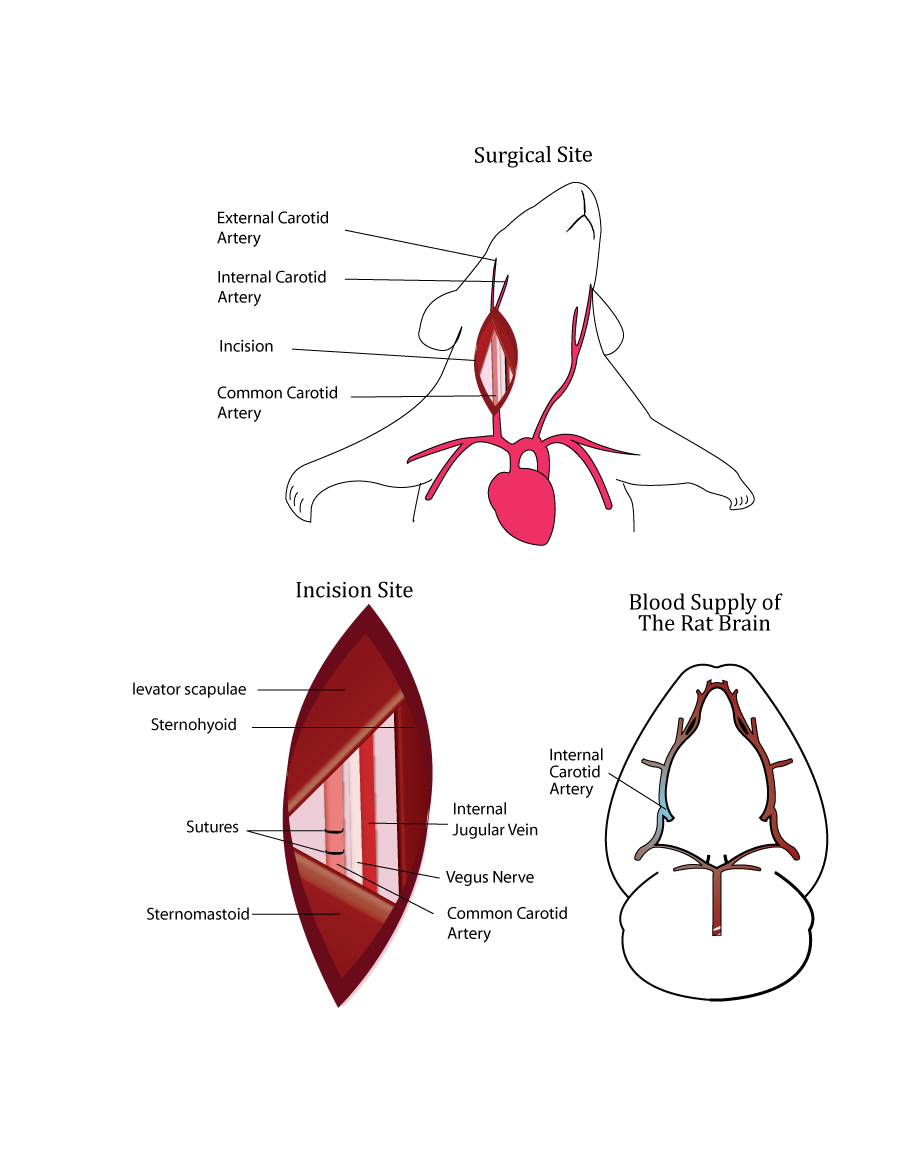Developing a New Animal Model
During my research on early child asphyxia I found the rat model currently used in the literature produced highly variable injuries. After researching I hypothesized that the probable cause of these inconsistencies is the nature of the blood vessels in the brain. Like any blood vessel map they differ greatly between individuals. As an example, compare the blood vessels of the inside of your forearm to your friends, you’ll find that they cross in different places and potentially you may have some vessels that your friend doesn’t, or vice versa. This variability occurs in the brain as well, in fact, in anatomy books you’ll see a ring of blood vessels in the middle of your head called the “circle of Willis” this is supposed to operate like a back-up system. The circle has four major blood vessels -feeding it (two carotid and two vertebral), the idea is that if one of these supplies fails, the brain can continue functioning as the circle of Willis that supplies the brain will still have a rich supply of blood from the other three blood vessels. However, the anatomy books don’t tell you that this is only intact in some of the population; most of the population have a semi-circle.
This variability of the circle of Willis is similar in the rat. In the model for early childhood asphyxia one of these supplies to the circle of Willis is tied off and then the rat is put in a low oxygen environment for 60 minutes. However, if some rats have a complete circle of Willis and some rats do not, the injury could be different and as my research found out, this difference could be huge! So I developed a model where instead of placing the rat in the low oxygen environment for 60 minutes, we placed each rat in low oxygen and observed the behaviour of the rat, we only removed the rat from the low oxygen once we saw a particular behaviour. This new model produced a more consistent brain injury. This meant we could use fewer rats to do the same experiment, reducing experimental cost and reducing the amount of rats needed, which helps me sleep at night.
To find out more, read my journal article published in Journal of Neuroscience Methods.
Blood Vessel ligation. Illustrated by Jack Rivers

